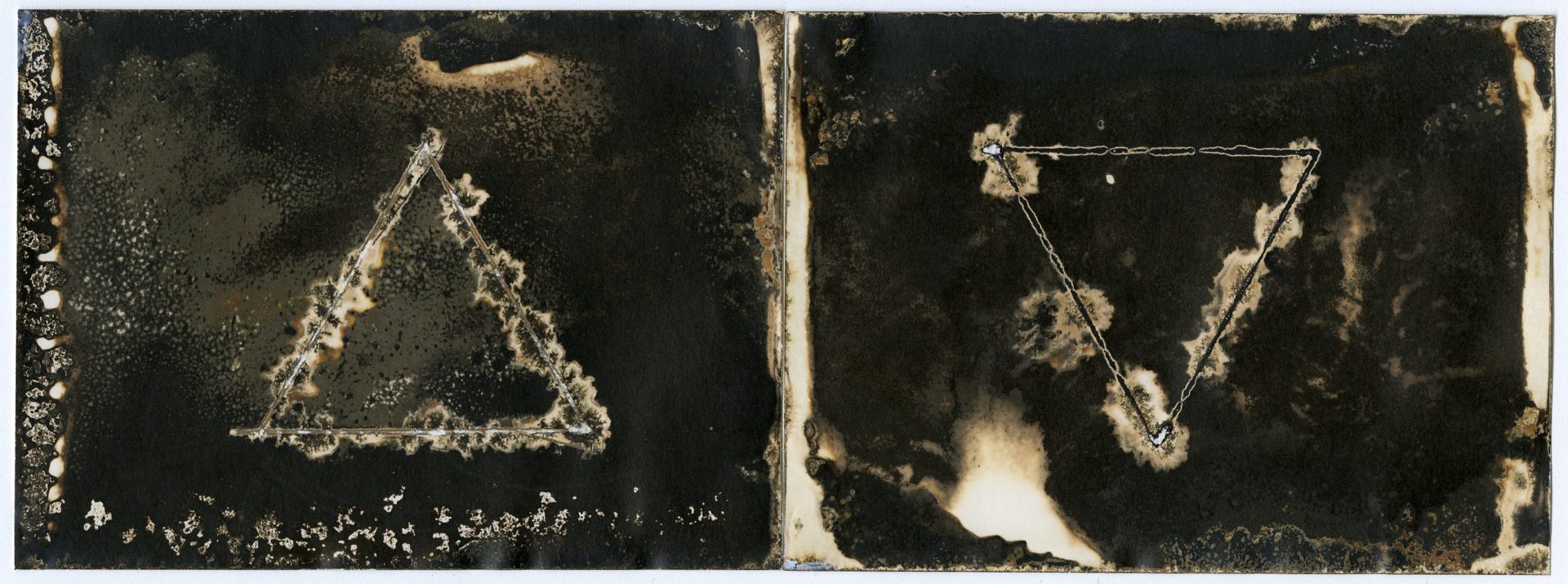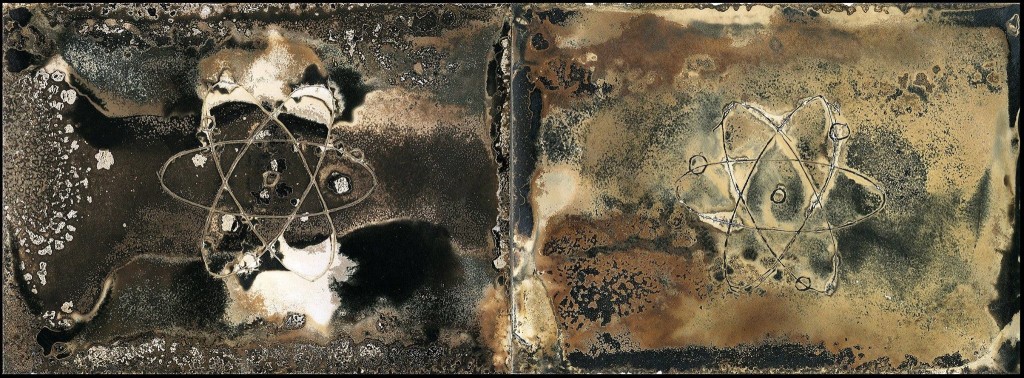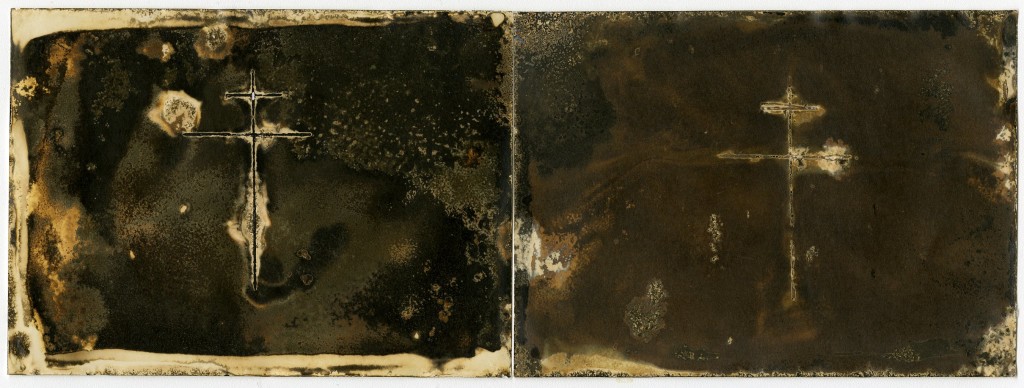Last summer, through some luck and networking, I was gifted a huge private collection of cameras and darkroom supplies from a friend-of-a-friend in Anchorage. At the time, I balked a bit at taking much of the collection – selfishly wanting only to take the best out of the lot, I didn’t want to add an entire darkroom worth of supplies to my already cramped creative space. I was unsure that I’d find use for most of the equipment, but my friend was certain that I could find good homes for everything in the lot. And, indeed, over the past six months, I’ve passed on a dozen lenses and cameras to a local photographer I know will treasure them. The heaviest boxes among the collection were two moving boxes filled to the brim of vintage photographic paper – all expired for at least 40 – if not 70 – years. These, out of the entire collection, seemed the most difficult to pass on, as I was certain I had no use for them (nor knew of anyone who would appreciate them). I used Facebook to connect with members of multiple alt-pro and historical photography groups, sharing photos of the paper – which were an instant hit – to find out what I could do with them. Lumengraphs and Photograms were known options, but not ones I was too keen on. Chemigrams and Bromoils were options suggested that I’d never practiced – and, so, fast forward a couple months and I find myself attending a workshop in Chemigrams and I fell in love.
This might not seem significant, but Chemigrams, for me, show a dramatic shift in what I’m comfortable with in my own process of artmaking. Unlike every other process I’ve worked in, from Van Dyke Brown to traditional Silver Prints, Chemigrams rely on an element I’ve never been comfortable with: serendipity. I like predictable results through controlling variables and isolating problematic elements – “happy accidents” seemed like sloppy artistry or laziness – excusing your quality by being happy with a lack of control or understanding.
Out of all the outrageous accoutrements one may see artists wear, horse blinders shouldn’t be one of them. If, as an educator, I urge my students to create work that stirs their public – to the point of making them uncomfortable – I must be willing to take similar leaps into the methods that I create with. Signing up for a workshop where two out of the three processes presented relied on an appreciation of serendipitous elements meant I wanted to not only learn – but grow.
At some point in January, the light went off with what I could use the vintage paper for: a simple project in abstract expression using my son’s Spirograph set to incise patterned shapes into the resist. That said, these tests were just fun explorations – nothing more. After several tests and a couple hours in the darkroom with my mind wondering, I finally found a way to use this vintage paper to create a series of work that had substance to it:
Staring at the box of Kodak Kodabromide I was using, I couldn’t help but think about the age of the paper. Expired in 1945, this box of paper was not only older than me – but it was older than both of my parents. My grandfather was a young man fighting in World War II when this box was opened. Although I find myself so far removed from that time being as young as I am, I have a unique connection and understanding of this conflict – much more than my own peers. As a military brat, my family was stationed in the Pfalz region of West Germany from age 8 to 11 – and unlike so many of our fellow Americans, we integrated into German culture in a variety of ways. Living on the “economy”, we participated in countless Volksmarches and town festivals while creating an adoptive family out of our neighbors, being so far removed from our own. With map in hand, I served as the family’s navigator for what seemed like hundreds of trips throughout Central Europe during our 3-year stay – and each trip involved taking in the differences in local culture as well as their extensive history. World War II relics were scattered throughout the countryside with memorials, gravesites and battlements becoming routine points of interest during our trips and I loved absorbing all the richness that each experience provided.
Our trip to Dachau, however, changed the tone.
10 years old, I stood in front of the ovens at Dachau, fully aware of what they were used for. Aware of the ashes and remnants of bone that were still visible on the inside, this moment stuck out of my childhood memories like a terrible trauma should. Standing in the “showers” at Dachau similarly stands out – although they were never used at this particular camp, the fear of every prisoner is palpable decades later – it stains the walls.
A highlight of my time in Germany was a visit from my grandfather – but the happy times with him are not what was etched into my memory. Upon a visit to some random German hamlet, my grandfather pointed out a deep scar on the corner of a building, stating that he made that mark by missing the corner in his tank over fifty years ago. At some point during the trip, his presumed laughter gives way to an uneasy weep. That’s what stuck with me.
My childhood involved standing on the grounds of Eagle’s Nest in Austria and staring at the countless tombstones surrounding Patton’s grave in Luxembourg. I read books on the hidden elements of the war – from Anne Frank’s Diary and Schindler’s List to Bright Candles by Nathaniel Benchley, a novel about the Danish Resistance. Even with such reverence and understanding, a simple, juvenile mistake sticks out like a sore thumb among my memories: scouring a local open-air antique market with a friend of mine and us both yelling out that I had found “Nazi coins!” among the relics – the pain on everyone’s face within earshot still stays with me. That symbol defined so much grief, anger and embarrassment for the German people – it carried a weight that I could never understand.
Symbols defined this war. Whether the Swastika, the Rising Sun or the Star of David, these symbols instilled fear, incited nationalism and segregated its people. Symbols also instilled hope – whether the humble paperclip or the Croix de Lorraine, each of these simple shapes embodied the stories of millions. Polarized, its people saw the duality behind each symbol – contrasting representations of pride versus hate, hope versus terror and peace versus widespread murder.
Fast forward to 2015 and symbols are more ubiquitous in our society than ever before – we text and send emoji extensively, allowing them to replace complicated emotions and concepts. Symbols may be more prevalent than ever, but the symbols of an era of loss, heroism, nationalistic fervor and regret have all but faded – their meanings deteriorated and lost over the seven decades that have followed. Perhaps even more concerning is that the duality behind these symbols are nearly completely lost, as history has forgotten to reveal the other side of the coin, leaving the potency (the “why”) out of our modern understanding of these symbols.
I’ve started this new series of work in hopes of opening up the conversation again, revealing the meanings behind these symbols and uncovering their duality once again so that they can be fully understood. A symbol of hate means little without understanding the twisted sense of hope it inspired for many, as does a symbol of freedom without understanding the ignorant and dangerous fear that concept incited. Printed on Kodak Kodabromide that expired a mere five days before the bomb was dropped on Hiroshima, this expired photographic paper is tied to this era, and the decay from this unique photographic process elicits a sense of decay, echoing the faded nature of the meaning behind these symbols.
The atomic era was defined by a symbol of hope, as was the bombs created from it looked upon as a solution for widespread war – forgotten, all too often, are the innocent lives just two bombs claimed. The Star of David, known as a symbol of segregation and blame during World War II overshadows its other meanings. As well, the triangles that made the Star labeled a wide variety of other groups; from gypsies to homosexuals, Hitler’s regeime labeled millions using single and superimposed triangles alike. Symbols of resistance, similarly, hold multiple meanings and are quite unfairly overshadowed by the symbols that define the hatred of the regime they fought against.
Picture that 10-year-old boy at Dachau again, staring at memorial containing a phrase repeated in five languages in bold type. The words “Never Again” have carried with me over the years, never losing their meaning – as they should remain.




wow, chemigrams. Never heard of though i did it myself by accident someday. Love yours, they are just beautiful!
Thanks for your kind words, Sander! I really have enjoyed creating these, watching them as they came up and enjoying the “mystery” behind the process. Christina Z. Anderson taught me the method in a workshop I attended in Portland this last fall – you should check out her work!